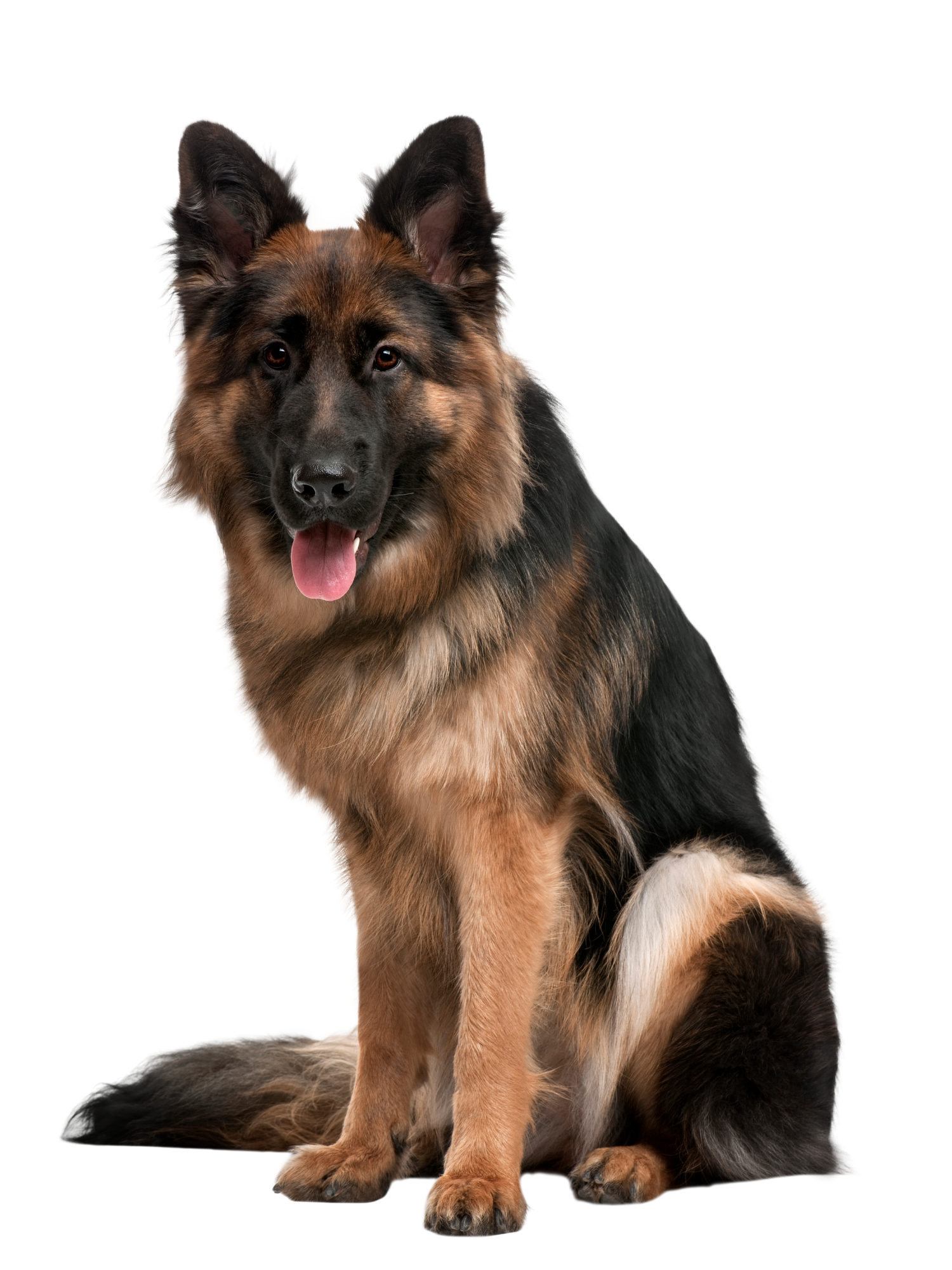Owners of the German Shepherd breed are concerned that the coat is smooth, close to the body, that is, without waves or frizz, but with volume , and, very importantly, with intense and bright colors .
It's important to keep in mind that the breed comes in two varieties : a "short" coat, which is the most common and numerous, and a long-haired one. Both varieties must have an outer coat and a woolly undercoat, known as the "undercoat." If this undercoat is absent or sparse, we must take this into account when brushing, because the brush we use will come into direct contact with the skin.
In short-haired dogs, the outer coat should be very dense, with thick hair lying close to the body. It is shorter on the head and front of the legs and slightly longer on the hindquarters, especially on the thighs and tail.

Long-haired German Shepherds have a more flaky outer coat, with clearly visible tufts on the ears, legs, and tail. When caring for our dog, if it's this variety, it's very important to take into account the long hairs that often grow between the toes.

The undercoat plays a very important role . It is the thermoregulator that protects them from extreme temperatures, prevents unwanted damage to the skin, and helps give the breed the desired appearance it should have.
The main function of the undercoat is to protect the skin from direct external aggressions such as sun, rain, dirt, bites, etc.
Range of colors and molts
Another aspect to keep in mind when trying to get the most out of the attention and care we must give to our dog's appearance is that the breed can come in a wide range of colors.
Although the most sought-after breeder is the so-called "black and tan," the color variety ranges from complete black to light gray. In all cases, they may have brown or yellow areas.
In any case, we will try to contribute by eating well and using good cosmetics to enhance the tone you have.
As with most breeds, German Shepherds experience coat changes, commonly known as " shedding ," which occur during seasonal changes and, depending on various factors, can last for weeks.
The main problem we encounter during shedding is that the undercoat tends to mat. This can cause problems such as itching, irritation, wounds, or eczema. Helping with this situation will always be beneficial for their health, aesthetics, and the overall hygiene of the space where they live.
Below, I detail and develop the most important points to keep in mind:
- The importance of bathing . Frequent bathing with appropriate cosmetics will give your dog a thick, voluminous, shiny coat with intense colors.
- Frequent brushing . Proper and frequent brushing eliminates matting, dead hair buildup, and prevents skin conditions.
- Pay attention during shedding seasons . When the skin and coat are not in good condition, the dog may experience continuous and intense shedding. The coat loses its shine and colors fade, waves appear in the coat, and the ends become frizzy and brittle. All of these are undesirable aspects and indicators of a poorly treated coat.
A GOOD BATH
Bathing helps remove deeper dirt and restore skin and hair with the nutrients that cosmetics provide.
Although it is a breed that, due to its physique and rusticity, does not get dirty easily, it is advisable to give it a good bath every two weeks .
Always choose a goodnourishing shampoo with ingredients provided with quality raw materials that also facilitate proper absorption to restore the biological balance of the skin and hair.
It is important to apply a good conditioner Most of the nutrients come from conditioners. When choosing a conditioner, also keep in mind that, as with shampoos, the product's pH should be close to pH 7.
The strands of hair will open up, and the nutrients provided by the conditioner will be able to penetrate the hair and provide the desired elasticity and shine.
The result will be a shiny, healthy coat that will give your German Shepherd the look you want for much longer.
ROUTINE BRUSHING AND MOISTURIZING
For daily brushing of the thighs and tail of short-haired dogs and, in general, for long-haired dogs, long-bristled brushes are recommended.
We brush sparingly, making sure to also take care of the inner layer.
If you encounter any difficulty during this process, do not apply pressure, as this will cause a knot to form and require a new tool. A good brush with flexible prongs will allow us to open the knot without unnecessarily disturbing the dog.
External factors such as wind, dust, sunlight, air conditioning and heating, environmental pollution, and even excessive humidity or dryness in the environment all affect hair and skin. This can be seen in the loss of elasticity and increased dryness that alters hair texture and makes brushing difficult.
To solve this, we can apply a good spray conditioner. We'll appreciate the ease of brushing and avoid making the dog uncomfortable and breaking its coat.
Other interesting tips:
- During shedding season, help yourself by raking or scooping the dead hair daily.
- If you need an urgent cleaning intervention because your dog has accidentally soiled itself, you can clean the specific area and eliminate the bad smell by spraying a dry shampoo directly on the dog. .
- Use an Ibáñez absorbent cloth. This is another great product that will help you dry off after baths. It's also really practical on rainy days to keep your dog dry and clean. It dramatically reduces the work of drying and removing dirt and odor from the dog itself and its surroundings.

0 comments